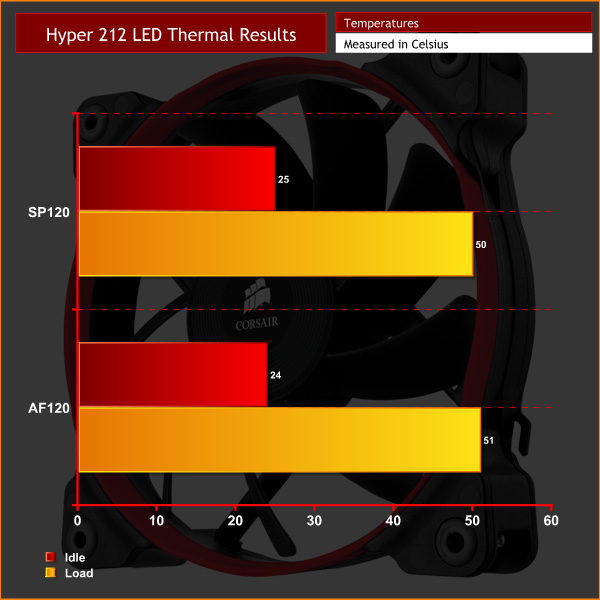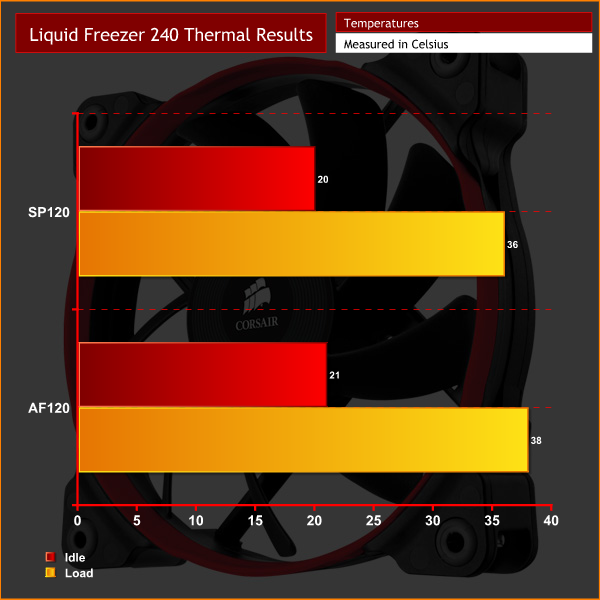Testing methodology
To get accurate data from comparing the static pressure fans to the airflow models, it was very important I devised a scientific and easily repeatable test. Most importantly, however, any test would have to be relevant to the average consumer – so using a £5000 custom watercooled PC would not have been the smartest move, for example.
Accordingly, I devised a simple test where the only changing variable was whether I used a static pressure or an airflow fan. Here's what I did:
First, I built the system for testing in the Kolink Aviator V chassis. This case features three fans out-of-the-box, with two fans intaking at the front of the chassis. This means our components are supplied with a good amount of air. In the system I used an Intel i7-5820K, MSI X99A SLI Plus motherboard, 16GB of Panram Ninja V DDR4, a Sapphire R9 285 ITX GPU, an OCZ Trion SSD and a Corsair RM750x PSU.
As for the all-important CPU cooler, I decided to pick two – the Cooler Master Hyper 212 LED air cooler, as well as the Arctic Liquid Freezer 240 all-in-one liquid cooler. This way we can assess whether static pressure vs airflow fans makes much difference whether you are using a radiator or a more typical heatsink tower.
As I have already mentioned, the specific fans I used are the Corsair SP120 High Performance Edition and the AF120 High Performance Edition models. These are particularly good for testing today as they are popular fans and are clearly defined as static pressure and airflow fans respectively.
In terms of actual testing, I performed two tests per cooler – one using the SP120s, and another using the AF120s. For the Hyper 212 LED I used a single fan in a push configuration, while for the Freezer 240, I used two fans in a push configuration.
To get a temperature reading, I ran Prime 95's (version 26.6) Small FFTs test for 10 minutes before noting down the maximum CPU temperature. I also used an NZXT Grid+ V2 fan controller to lock all the system fans – CPU and chassis fans – to a 50% speed, ensuring PWM control does not influence the testing today.
Results
 KitGuru KitGuru.net – Tech News | Hardware News | Hardware Reviews | IOS | Mobile | Gaming | Graphics Cards
KitGuru KitGuru.net – Tech News | Hardware News | Hardware Reviews | IOS | Mobile | Gaming | Graphics Cards





I needed to do some searching to find out what the issue really was. It sounded like a static pressure fan pushed, while an airflow fan pulled, from the article. But, in fact, a static pressure fan moves a smaller amount of air under a high pressure, while an airflow fan moves a larger amount of air under a lower pressure. This is basically the fluid equivalent of matching the impedance in an electrical circuit. So while there may be situations where it doesn’t matter too much, in general using the right kind of fan will mean more of the input energy is transferred to useful work for your purpose.
it all lies in the design of the fan (number and shape of the blades, the motor can be the same in both “Airflow” and “static pressure” fans) and on the different curve that it provides…
for example let’s take this graph: https://i.ytimg.com/vi/fiJeOLkLV5I/maxresdefault.jpg
an “airflow” fan would have a curve like the 007, whilst a “static pressure” one will have a more steep curve like the 008… the steeper the curve the more it will counter the resistance in the circuit… this also means that the airflow fan WILL NOT ALWAYS MOVE MORE AIR than a static pressure one…
it’s a bit of a long lecture if I’d have to explain the physics behind this thoroughly, so I’ll stop here…
I’ve made $84 ,000 at this point sometime this year working on line moreover I’m a full time student . I’m by making use of a web business marketing opportunity I heard of and even I’ve made such type of good money . It is actually extremely simple to use not to mention I am just so happy that I found out about that . The possibility with this is end-less . Here’s what I do>>>
SECURE37.COM
I’ve earned $84 ,000 at this point this season working online moreover I’m a full time college student . I’m benefiting from a home based business money making opportunity I heard of and additionally I’ve made this kind of decent earnings . It is undoubtedly user-friendly and I am just very satisfied that I discovered out about it . The possibility with this is long-term . Here’s everything that I do>>>
SECURE37.COM
Think the gap between the fins and perhaps length of fin is the deciding factor.
Decent gap-any fan will push air thru.
Narrow gap-static pressure may be beneficial…………..
Interesting….
I didn’t even know there was 2 different type of fans 😛
I’ve used both kinds in push/pull on AIOs exhausting out of the back of midsized ATX cases, and haven’t noticed much of a difference in temps either at idle or under load. The BIG thing I’ve noticed is the loudness of included fans. Like this H80i V2, which I think came with SP-120’s sounded like an SR-71 taking off from idle to heavy load. I replaced them with Noctuas and now they don’t make a peep, but there’s no real diff in temps. May be the Nocs are slightly cooler. I would have been more interested to see a test switching out regular AF case fans with SP’s to see if the internals get hotter. Or even tests with cheap good fans (like CM’s SickleFlow 120’s versus the more expensive Nocs) to see the outcome. But good article! I was surprised, but as someone else said – perhaps you should also have tried it on really big block performance aircoolers. Thanks!
sure thing, the gap will influence the hydraulic diameter… the bigger the gap, the bigger the hydraulic diameter and the lesser the head loss.
read my other comment for some more info…
I have sp fans and AF fans on my PC. I use the SP for going through mesh/grates/heatsink. I too have noticed little difference it term of ability to cool. I have noticed though that the SP are way quieter by moving slower but cool just the same. My 2 AF are at the front and the back, 140 front stock 120 on back. I use one SP for the front as well and really does about the same amount of air movement. I just swapped my 212 evos stock fan, it died, with a Corsair SP120. Same temps but quite and better looking.
“It is likely that at 50% fan speed, the airflow fans are still capable of pushing enough air to cool the heatsink/radiator, but this may not be the case at a lower rpm.”
Yet you didn’t test that. What a shame.
i have a H105 and a bequiet dark rock pro – and swapped the fans. My 4770k goes as high as 85 degrees in benchmark at 4,4ghz with the H105, and the bequiet keeps my 2600k at 86 degrees, overclocked to 5.0 ghz. So the fans did make a huge difference on the aircooler, and a exponential growth in noise. The 105 is still enough while being completely silent